May 6, 2024 | 18:36 GMT +7
May 6, 2024 | 18:36 GMT +7
Hotline: 0913.378.918
May 6, 2024 | 18:36 GMT +7
Hotline: 0913.378.918
Hai Phong city, known for its expansive winter crop production area in the Red River Delta, employs innovative methods and utilizes the support of the agricultural extension system. Early winter crops, including warm-weather crops such as corn, tomatoes, watermelon, cucumbers, pumpkins, and sweet potatoes, are typically sown between August 15 and October 5. On the other hand, the main cold-tolerant crops include potatoes, cruciferous vegetables, garlic, chili peppers, legumes, and ornamental flowers, are sown between October 5 and November 10.
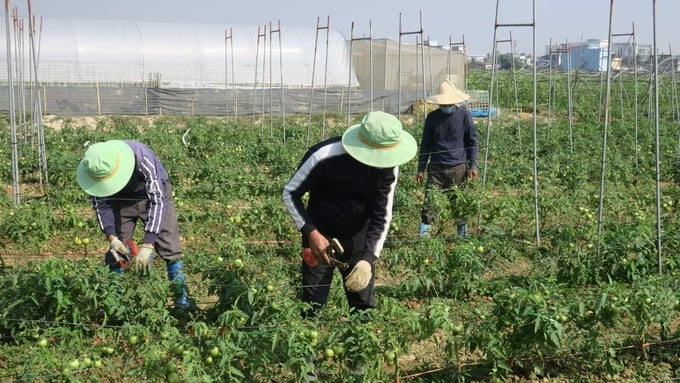
Production of winter crops is well-maintained within Hai Phong city. Photo: Dinh Muoi.
Whereas many regions in Vietnam face challenges in the production of winter crops, Hai Phong city considers it an indispensable venture. Despite difficulties in expanding production areas, Hai Phong city's winter crop production has maintained a stable development. Notably, winter crop production has become a tradition, yielding high value and income, in local districts and commune.
Mr. Nguyen Van Hoa, a farmer from Quan Bo hamlet, Cap Tien commune, Tien Lang district, transformed a small grapevine farm, which had been nearly abandoned due to its limited potential, into a profitable venture by producing winter crops, primarily potatoes. With guidance from agricultural extension officers who addressed his inquiries, Mr. Hoa overcame initial hesitation and successfully earned a substantial income from his first winter crop.
"I was not aware that our local soil is suitable for potatoes. After engaging in this venture, I received support and advice from seed selection to cultivation techniques. During the harvesting season, a local business visited the farm and purchased the harvest on the spot. I have never found agriculture to be so convenient. For the 2023 winter crop, I have expanded my total production area," shared a pleasantly surprised Mr. Hoa.
This revelation echoes the experiences of many households in Tien Lang district. The district, which was a modest contributor to winter crop production in Hai Phong city, has surpassed expectations. With an average production area of over 2,000 hectares per winter crop, Tien Lang has become one of the leading districts in Hai Phong city in winter crop production.
"For many years, we have consistently maintained at least 10 hectares of concentrated potato production area with an average yield of approximately 7.5 tons per hectare. Recently, our agricultural cooperative has signed procurement contracts with a company in Hai Duong province, eliminating our concerns about market access for farmers. Our community has responded very positively," shared Mr. Phan Van Tu, Director of Cap Tien Agricultural Cooperative.
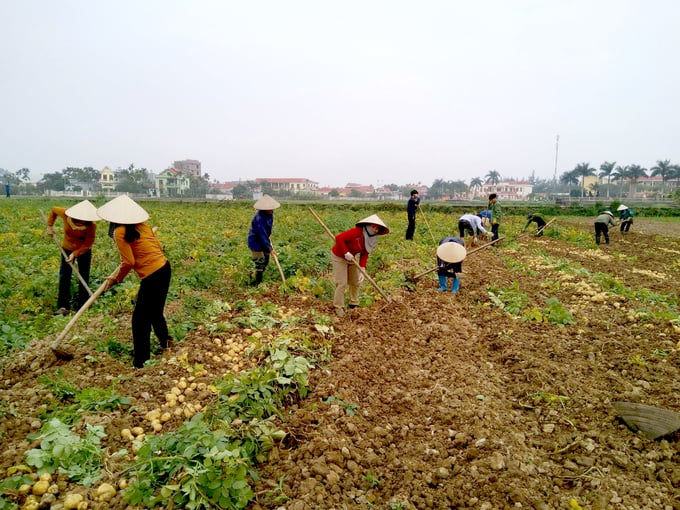
Potatoes are one of the most extensively produced winter crops in Hai Phong city. Photo: Dinh Muoi.
There are currently approximately 30 hectares of potato production area and 30 hectares of cucumber production area during the winter crop in Tien Thanh commune, Tien Lang district. Accordingly, approximately 100 local households are engaged in cucumber production and 200 households are engaged in potato production. Notably, cucumbers are cultivated on land previously used for two rice crops, and potatoes are cultivated on dedicated plots at a frequency of one crop per year.
Additionally, local residents are unaffected by market fluctuations thanks to the cooperative's collaboration with businesses to ensure the comprehensive marketing of all winter crop products. The local community has established a long-standing tradition of winter crop production by effectively maintaining this practice for several decades.
Mr. Hoang Xuan Dinh, Director of Tien Thanh Cooperative, emphasized that the key to sustaining winter crop production lies in efficiency. Agricultural products must be sold successfully, resulting in high and stable prices for the farmers.
At the beginning of each crop, the cooperative contacts businesses to sign fixed-price procurement contracts for local farmers. Local potatoes are typically priced at 7,000 Vietnamese dong per kilogram, whereas cucumbers are priced at between 8,000 and 12,000 Vietnamese dong per kilogram. At these price ranges, farmers can earn approximately 2.5 million Vietnamese dong per sao (360m2) for a potato crop and 6 million Vietnamese dong per sao for a cucumber crop, which is significantly higher compared to profits from rice production.
During the harvesting season, traders from various regions often approach farmers for negotiations and purchases at higher prices than those agreed upon with the cooperative. However, any violation of agreements results in the immediate dissolution of these partnerships.
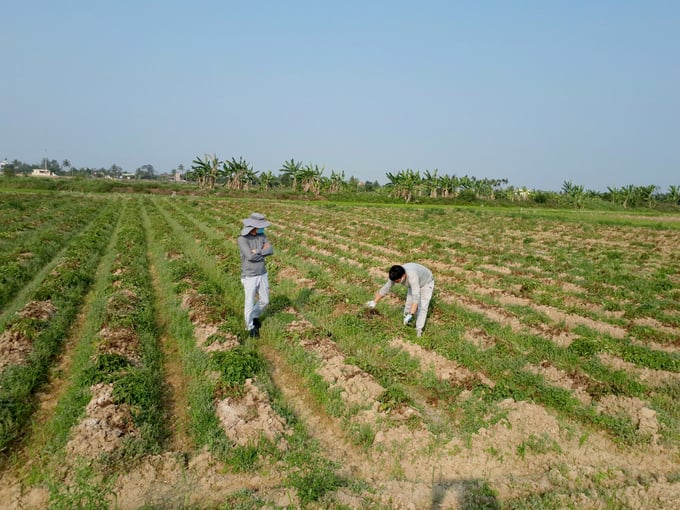
Maintaining a productive winter crop has become a challenging effort without effective product consumption and high value. Photo: Dinh Muoi.
In response to this issue, businesses, cooperatives, and farmers discuss before the harvesting season to agree on the purchase price. If any party violates the contract, compensation is required.
"The prices set by traders may be higher, but they often purchase in smaller quantities and are selective. On the other hand, with cooperatives and linked businesses, farmers receive seed credit, stable prices, and support in terms of fertilizer and supplies. We are closely associated with mutual benefits. If farmers breach the contract and sell their agricultural products outside of the agreed terms, they have to compensate up to 1.5 times the value of the seed cost. They are also not eligible for purchase in the following years," shared Mr. Dinh.
Mr. Dinh Xuan Thang, Deputy Head of the Vinh Bao district's Department of Agriculture and Rural Development, stated: "Despite the relatively modest winter crop production area, it is consistently maintained every year on a scale of thousands of hectares. Notably, the winter crop production area in Vinh Bao district exceeded 2,000 hectares in 2023. It is expected to increase further in the near future.
Potatoes are the predominant winter crop in Vinh Bao, commonly produced in the villages of Tan Lien and Hoa Binh. The majority of the potato production area has entered into offtake contracts with processing businesses, ensuring farmers a guaranteed market. With potato prices ranging from 7,000 to 7,500 Vietnamese dong per kilogram, farmers are enthusiastic, enjoying significantly higher income compared to rice producers."
According to the Hai Phong city's Department of Agriculture and Rural Development, the annual plan for winter crop production has consistently targeted under 8,000 hectares, with a total production value of approximately 8 trillion Vietnamese dong. Regions with the highest winter crop production area include the districts of Vinh Bao, Tien Lang, An Duong, Kien Thuy, Thuy Nguyen. These districts are specialized in producing crops such as corn, peanuts, potatoes, sweet potatoes, beans, and various vegetables.
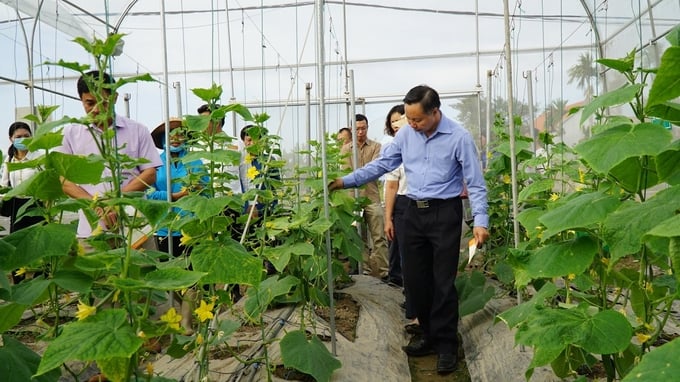
A winter vegetable production model in Kien Thuy district. Photo: Dinh Muoi.
Despite a relatively static total production area, winter crops remain a popular choice among local farmers. Compared to other crops, winter crops have stable market access through product consumption linkages facilitated by the agricultural sector.
Mr. Nguyen Thanh Hiep's family in Nam Binh hamlet, An Hung commune, An Duong district, had been growing Gladiolus for sale during the Tet festival. However, due to a lack of understanding of cultivation techniques, the flowers were often unappealing, resulting in low economic efficiency.
Subsequently, the Agricultural Extension Center of Hai Phong city selected Mr. Hiep to implement the model "Application of technical advances in Gladiolus production in association with product consumption." Mr. Hiep shared that during the implementation process, the center assigned multiple officers to regularly monitor and inspect the fields. Additionally, they provided guidance on irrigation, fertilization, pest control, and overall care throughout the production process.
In addition to new cultivation techniques, Mr. Hiep's family also changed the crop structure. After the flowering season, they planted cucumbers and one rice crop to reduce pest damage, minimize the use of plant protection chemicals to ensure both economic development and environmental and health protection.
"Thanks to technical guidance provided throughout the production process, the flowers' growth period has been reduced to 85 to 90 days. The flowers are more appealing, and their leaves are greener. During the last Tet festival, our family harvested at least 300,000 Gladioli, with a net profit of over 1 billion Vietnamese dong for an area of 1.5 hectares," Mr. Hiep shared.
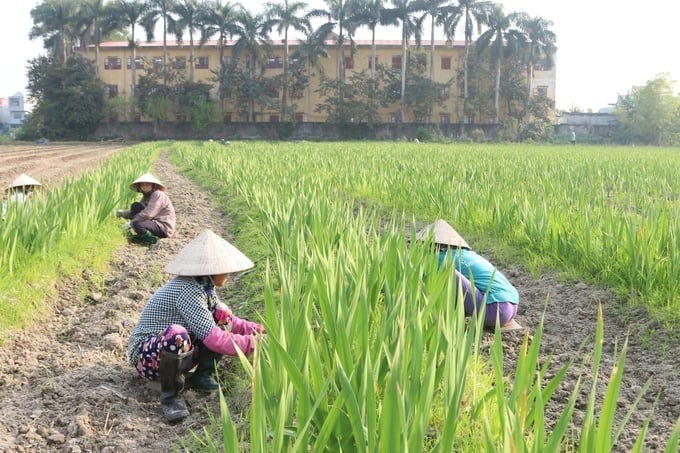
Several winter flower production models in Hai Phong city are generating a significant stream of revenue. Photo: Dinh Muoi.
In addition to the aforementioned model, the Agricultural Extension Center of Hai Phong city also supported various winter crop production models in association with the restructuring of crops and land accumulation in An Duong district, yielding significant and more favorable results compared to traditional production methods.
Namely, farmers in An Hoa commune, An Duong district, harvested over 300 tons with just 15 hectares of production area, achieving a yield of more than 7.2 tons per hectare. This positive results can be attributed to the local Agricultural Extension Center's support in applying biological fertilizers and promoting mechanization in potato production.
According to Mr. Nguyen Ngoc Dam, Director of the Agricultural Extension Center of Hai Phong city, the mechanization and application of modern techniques replacing traditional production practices has helped local potato production, and winter crop production as a whole, achieve high yields and quality.
However, the winter crop production is still restricted by a lack of labor and insufficient access to support. There is a need for additional policies encouraging production development to promote winter crop production, thereby creating a legal framework for expansion, and attracting investment from businesses into the agricultural sector.
In addition, priority should be given to mechanization in production, with a focus on soil preparation, planting, care, harvesting, transportation, and preliminary processing to maximize the potential and advantages of agriculture in Hai Phong city.
According to the Hai Phong city's Department of Agriculture and Rural Development, the city planned to cultivate 8,500 hectares of winter crop by the end of 2023, which is a higher target compared to that of 2022. As of early December 2023, local districts and communes have cultivated nearly 4,870 hectares, achieving 57.3% of the plan, and reaching 98% of the total cultivated area in the same period in 2022.
Translated by Nguyen Hai Long
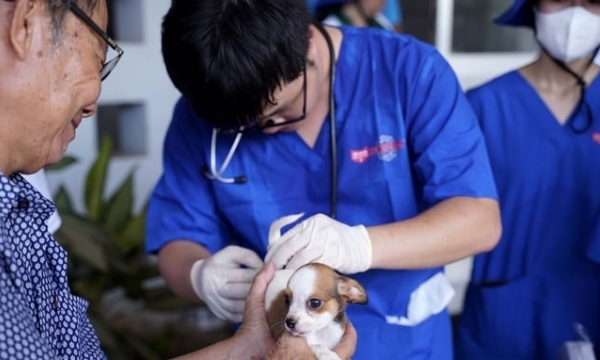
(VAN) Pet owners in Long An province exhibit indifference and a lack of understanding regarding rabies. They maintain the misconception that pet dogs and cats are immune to the disease.

(VAN) The STAR-FARM project is funded by the European Union and implemented in the provinces of Dong Thap, Kien Giang and Tra Vinh, with a total investment of 4.2 million Euro.

(VAN) The ecosystem and social impact business organizations (SIBs), although still modest in number, is very diverse and dynamic, they have been creating positive changes in many aspects, contributing to building a sustainable future
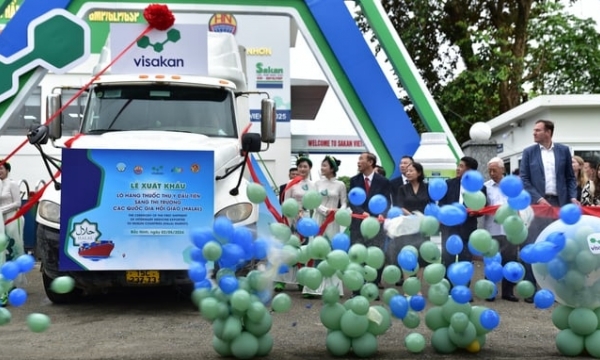
(VAN) Visakan Biotechnology Development Investment Company, a subsidiary of Hung Nhon Group, recently held a ceremony to commemorate its first export shipment of veterinary medicine to the Halal market.

(VAN) If temporary regulations on dog and cat ownership are approved, Ho Chi Minh city will pilot the implementation of microchipping for dogs and cats in several designated areas within the inner city.
/2024/05/02/5303-5730-6-185654_281.jpg)
(VAN) Dr. Pham S, Vice Chairman of Lam Dong Provincial People's Committee: 'Lam Dong has attracted 80 FDI enterprises and 1,550 domestic enterprises to invest in agricultural development, with 150 agricultural cooperatives applying high technology'.
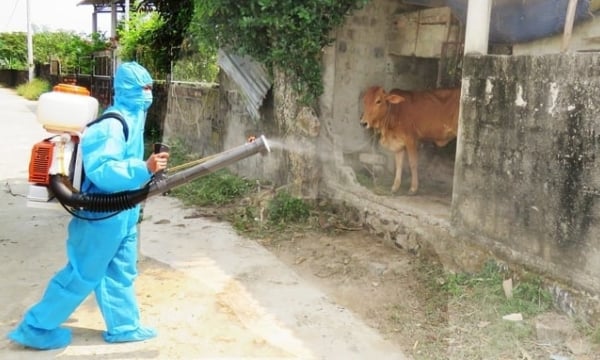
(VAN) An outbreak of Lumpy Skin Disease has occured across four districts in Quang Binh province, prompting local veterinary forces to strengthen prevention efforts.